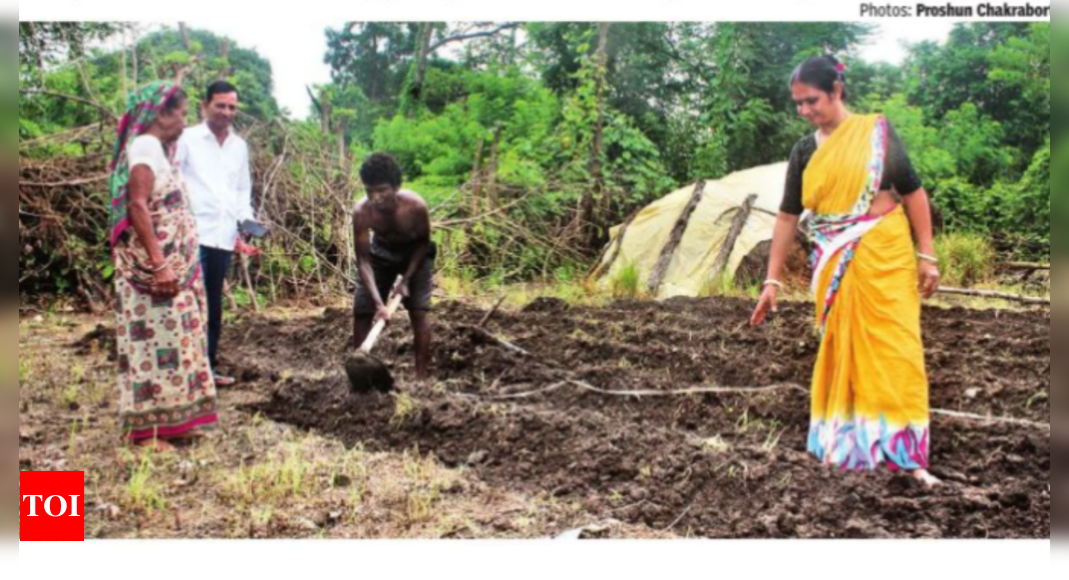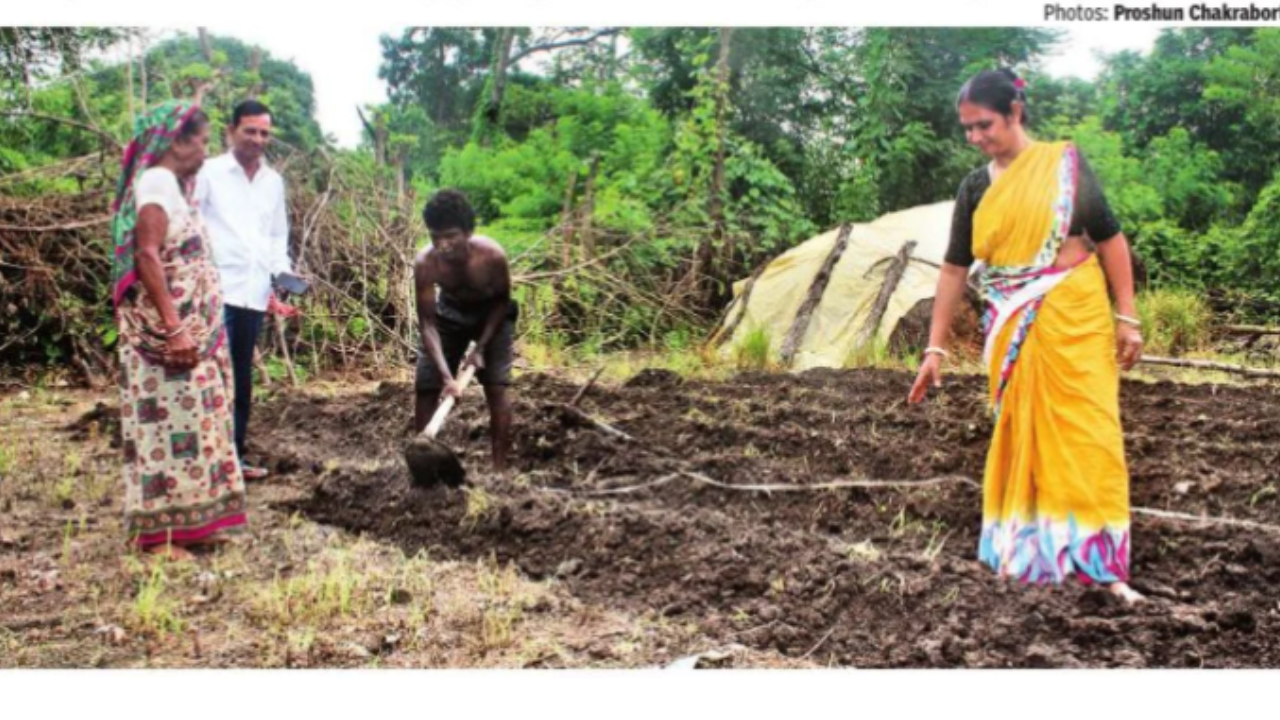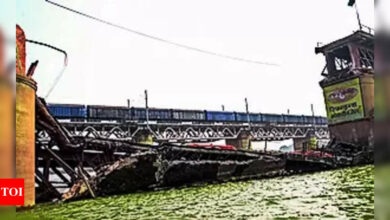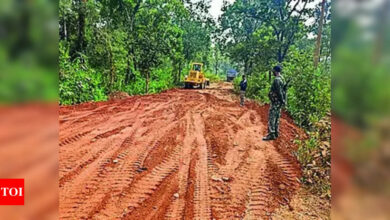India
Hindu refugees in India stateless for over 50 years | India News – Times of India



GADCHIROLI: Bijoy Das was 20 when he found himself in the middle of the treacherous Dandakaranya forests of central India. More than 50 years later, he still shudders at the thought of the circumstances that forced him and countless other Hindus to leave their ancestral home in the then East Pakistan and seek refuge in India. Circumstances that are again reflected in the reports of violence against minorities in Bangladesh after the recent ouster of Prime Minister Sheikh Hasina. As more and more Bangladeshi Hindus gather at the border to seek shelter in a new land, settlers from decades past are reliving their stories of loss, displacement and the long wait for legal recognition by the Indian government.
‘No other choice than to flee’
Now 72, Das’s voice still trembles as he recalls his sister’s funeral in his village. “They dragged her away. She kept screaming for help. As a young boy, all I could do was stand there, petrified. She was raped and murdered. Her name was Dulaan. Later, we found her body in the river,” he says, staring out of the window of his hut in Pakhanjore village, on the southern tip of the Maoist heartland of Bastar. The area is more than 1,400 km from the home he left behind on the banks of the Laukhati River, 250 km from Dhaka.
Next to Das, an elderly Somaresh Singha tells a chilling story of his escape. “My father walked out of his burning house in a burqa, helped by sympathetic Muslim neighbors in Charbat village in Faridpur district. Gangs were on a killing spree and had kidnapped dozens of girls. There was no choice but to flee,” he says.
Das and Singha’s families crossed over to India on foot. Once there, they were crammed into trains or trucks and taken to the Mana transit camp near Raipur, then in Madhya Pradesh (now part of Chhattisgarh). After months of sheltering in tents in dense forests, they were resettled in hamlets that are now part of the Maoist Red Corridor. There are 2.8 lakh East Bengali refugees spread across 300 camps in these forests, including in Gadchiroli district of Maharashtra.
A history of violence
The killings and persecutions in East Pakistan had begun long before the world woke up to them in 1971. The 1964 Dhaka riots, triggered by the Hazratbal shrine incident in Kashmir, were a sign of East Pakistan’s slide into intolerance. Operation Searchlight of 1970-71, led by the Pakistani army and the Razakar militia, marked a period of unspeakable agony for millions of Bengali Hindus.
Kalikrishna Biswas, 75, whose entire family was slaughtered, says “the Razakar militia unleashed by the Pakistani army was brutal.” As the violence escalated, hundreds of thousands of people fled with nothing but the clothes on their backs.
Amar Mandal, originally from Khulna district, remembers crossing the Padma River at night, wading through marshy fields as mothers pressed their children’s mouths to muffle cries that might betray their presence. He was separated from his father, who had stayed behind, for years. “One day, I got a telegram from my father. He was standing at the Indian border, having borrowed money to reach there. He was lucky to be reunited with his family in Gadchiroli,” Mandal says.
Fight to survive
But the struggle for Mandal and thousands like him didn’t end when they reached India. As they tried to start a new life, they found themselves battling a new threat in the dense forests. “Many children and elders were mauled by tigers. There is not a single village in DhakaBangladeshKolkata 1,400 km away where people were not preyed upon by wild animals. Slowly, we cleared the forests and made the place habitable and grew crops,” says Sunil Biswas, a settler since 1970. But the land was barren and the produce was barely enough to feed their families. “After every harvest, we looked for odd jobs to make ends meet,” he adds.
Many refugees tried to return to the newly formed Bangladesh after 1971, but attempts to do so proved unsuccessful. Biswas says the 1979 ‘Marichjhapi massacre’ in the Sundarbans “killed any hope of coming closer to home by the police in left-wing West Bengal”. “We made Dandakaranya our home and made peace with the wilderness,” he adds.
But relations with local tribes are strained. “Initially, the adivasis were indifferent to us, but tensions have increased over the years,” says one of the settlers. Sporadic campaigns to evict refugees have fueled fears among settlers. “We are scared. We pray that Pakhanjore does not end up like Bangladesh,” he says.
A matter of identity
The residents of these refugee villages have held on to their Bengali culture and beliefs. In ‘Ghot’ or village no. 53, the sound of evening prayers reverberates through the air. A red ‘gamcha’ tied with rice and jaggery — a good-luck charm — adorns every doorway. Inside, images of ‘Lokkhi Thakur’ (Goddess Laxmi) adorn the walls.
Settlers in Dandakaranya can be divided into two groups: those who came through official channels from East Pakistan between 1964 and 1971, and those who migrated after the formation of Bangladesh in 1971. The former received a ‘border slip’ as proof of their refugee status. Others settled without documents. Some managed to bring with them only a few valuables or just the family god or a photograph.
For first-generation refugees like Jyotishchandra Sarkar, the struggle to make a home is a lifelong one. “We broke rocks, cut down forests, and built a livable place in the wilderness,” says Sarkar, now 87. Today, the 1985 border strip is his only proof of identity.
Sukhendu Chakraborty, 68, a resident of Ghot No.20 in Gadchiroli, says they have managed to thrive “despite the identity crisis and acute hardships”. “In those years, there was hardly any government footprint here. Today, government officials and netas visit these forests with commandos and minesweepers. But we have made peace with nature and the people. Adversity has hardened our will to survive, but we pray for stability and recognition,” he says.
Still Stateless
Decades after arriving in India, Chakraborty and countless others remain stateless. They worked the land, raised families and made a living, but the struggle to become Indian citizens continues.
Many have managed to find a foothold, some taking advantage of government programs that have given them jobs, land, and the chance to set up small businesses and farms. Their progress has not been without setbacks, however. Bangladeshi high schools, once set up by the government specifically for refugee children, have closed, while many claim they have been excluded from government programs. Many settlers farm the land without official ownership.
“We have been living here for decades, but we are still waiting for recognition,” Bipin Bepari, member of Nikhil Bharat Bangali Samanbay Samiti (NBBSS), expresses the frustration of many.
Jatin Karmakar (name changed), a grocery store owner, is elated that his son has landed a job in a company. Though he leads a normal life in India, there are still issues with his legal status. “I have an Aadhaar card and a voter ID card, but I am still not an Indian citizen,” he says. Settlers say they need the border slip for citizenship documentation, which Karmakar does not have.
Kalikrishna Ghose came to India in 1982, but like many others, finds himself in a grey area when it comes to citizenship. “I came through an agent. There are many in Bangladesh who help you cross the border. After living in Kolkata for a while, I settled in Chamorshi in Gadchiroli in 1989, where my family was already living,” he says.
Waiting for CAA
The Citizenship Amendment Act (CAA) seemed like a beacon of hope for these refugees. Passed in 2019, CAA paves the way to Indian citizenship for religious minorities from Afghanistan, Bangladesh and Pakistan who arrived in India in 2014. However, many settlers have found the process difficult, especially those who do not have documents to prove their eligibility. “Many do not apply because they do not have documents,” says Subhodh Biswas, president of NBBSS. Of the 221 applications they have filed so far under CAA, only six have been successful.
The ongoing political unrest in Bangladesh has triggered a new wave of attacks on Bengali Hindus. “My brother keeps calling me on WhatsApp, asking me to come and take him to India,” says Krishna Bose of Chamorshi. “Nobody is buying our properties there. They want Hindus to leave everything and go, so it becomes an easy rampage,” he says.
Recently, around 10,000 Bengali settlers gathered in Pakhanjore and urged the Centre to open the borders for Hindus from Bangladesh. Biswas says his organisation plans to hold similar rallies in Bengali areas before launching an agitation at Jantar Mantar in New Delhi on September 23.
‘No other choice than to flee’
Now 72, Das’s voice still trembles as he recalls his sister’s funeral in his village. “They dragged her away. She kept screaming for help. As a young boy, all I could do was stand there, petrified. She was raped and murdered. Her name was Dulaan. Later, we found her body in the river,” he says, staring out of the window of his hut in Pakhanjore village, on the southern tip of the Maoist heartland of Bastar. The area is more than 1,400 km from the home he left behind on the banks of the Laukhati River, 250 km from Dhaka.
Next to Das, an elderly Somaresh Singha tells a chilling story of his escape. “My father walked out of his burning house in a burqa, helped by sympathetic Muslim neighbors in Charbat village in Faridpur district. Gangs were on a killing spree and had kidnapped dozens of girls. There was no choice but to flee,” he says.
Das and Singha’s families crossed over to India on foot. Once there, they were crammed into trains or trucks and taken to the Mana transit camp near Raipur, then in Madhya Pradesh (now part of Chhattisgarh). After months of sheltering in tents in dense forests, they were resettled in hamlets that are now part of the Maoist Red Corridor. There are 2.8 lakh East Bengali refugees spread across 300 camps in these forests, including in Gadchiroli district of Maharashtra.
A history of violence
The killings and persecutions in East Pakistan had begun long before the world woke up to them in 1971. The 1964 Dhaka riots, triggered by the Hazratbal shrine incident in Kashmir, were a sign of East Pakistan’s slide into intolerance. Operation Searchlight of 1970-71, led by the Pakistani army and the Razakar militia, marked a period of unspeakable agony for millions of Bengali Hindus.
Kalikrishna Biswas, 75, whose entire family was slaughtered, says “the Razakar militia unleashed by the Pakistani army was brutal.” As the violence escalated, hundreds of thousands of people fled with nothing but the clothes on their backs.
Amar Mandal, originally from Khulna district, remembers crossing the Padma River at night, wading through marshy fields as mothers pressed their children’s mouths to muffle cries that might betray their presence. He was separated from his father, who had stayed behind, for years. “One day, I got a telegram from my father. He was standing at the Indian border, having borrowed money to reach there. He was lucky to be reunited with his family in Gadchiroli,” Mandal says.
Fight to survive
But the struggle for Mandal and thousands like him didn’t end when they reached India. As they tried to start a new life, they found themselves battling a new threat in the dense forests. “Many children and elders were mauled by tigers. There is not a single village in DhakaBangladeshKolkata 1,400 km away where people were not preyed upon by wild animals. Slowly, we cleared the forests and made the place habitable and grew crops,” says Sunil Biswas, a settler since 1970. But the land was barren and the produce was barely enough to feed their families. “After every harvest, we looked for odd jobs to make ends meet,” he adds.
Many refugees tried to return to the newly formed Bangladesh after 1971, but attempts to do so proved unsuccessful. Biswas says the 1979 ‘Marichjhapi massacre’ in the Sundarbans “killed any hope of coming closer to home by the police in left-wing West Bengal”. “We made Dandakaranya our home and made peace with the wilderness,” he adds.
But relations with local tribes are strained. “Initially, the adivasis were indifferent to us, but tensions have increased over the years,” says one of the settlers. Sporadic campaigns to evict refugees have fueled fears among settlers. “We are scared. We pray that Pakhanjore does not end up like Bangladesh,” he says.
A matter of identity
The residents of these refugee villages have held on to their Bengali culture and beliefs. In ‘Ghot’ or village no. 53, the sound of evening prayers reverberates through the air. A red ‘gamcha’ tied with rice and jaggery — a good-luck charm — adorns every doorway. Inside, images of ‘Lokkhi Thakur’ (Goddess Laxmi) adorn the walls.
Settlers in Dandakaranya can be divided into two groups: those who came through official channels from East Pakistan between 1964 and 1971, and those who migrated after the formation of Bangladesh in 1971. The former received a ‘border slip’ as proof of their refugee status. Others settled without documents. Some managed to bring with them only a few valuables or just the family god or a photograph.
For first-generation refugees like Jyotishchandra Sarkar, the struggle to make a home is a lifelong one. “We broke rocks, cut down forests, and built a livable place in the wilderness,” says Sarkar, now 87. Today, the 1985 border strip is his only proof of identity.
Sukhendu Chakraborty, 68, a resident of Ghot No.20 in Gadchiroli, says they have managed to thrive “despite the identity crisis and acute hardships”. “In those years, there was hardly any government footprint here. Today, government officials and netas visit these forests with commandos and minesweepers. But we have made peace with nature and the people. Adversity has hardened our will to survive, but we pray for stability and recognition,” he says.
Still Stateless
Decades after arriving in India, Chakraborty and countless others remain stateless. They worked the land, raised families and made a living, but the struggle to become Indian citizens continues.
Many have managed to find a foothold, some taking advantage of government programs that have given them jobs, land, and the chance to set up small businesses and farms. Their progress has not been without setbacks, however. Bangladeshi high schools, once set up by the government specifically for refugee children, have closed, while many claim they have been excluded from government programs. Many settlers farm the land without official ownership.
“We have been living here for decades, but we are still waiting for recognition,” Bipin Bepari, member of Nikhil Bharat Bangali Samanbay Samiti (NBBSS), expresses the frustration of many.
Jatin Karmakar (name changed), a grocery store owner, is elated that his son has landed a job in a company. Though he leads a normal life in India, there are still issues with his legal status. “I have an Aadhaar card and a voter ID card, but I am still not an Indian citizen,” he says. Settlers say they need the border slip for citizenship documentation, which Karmakar does not have.
Kalikrishna Ghose came to India in 1982, but like many others, finds himself in a grey area when it comes to citizenship. “I came through an agent. There are many in Bangladesh who help you cross the border. After living in Kolkata for a while, I settled in Chamorshi in Gadchiroli in 1989, where my family was already living,” he says.
Waiting for CAA
The Citizenship Amendment Act (CAA) seemed like a beacon of hope for these refugees. Passed in 2019, CAA paves the way to Indian citizenship for religious minorities from Afghanistan, Bangladesh and Pakistan who arrived in India in 2014. However, many settlers have found the process difficult, especially those who do not have documents to prove their eligibility. “Many do not apply because they do not have documents,” says Subhodh Biswas, president of NBBSS. Of the 221 applications they have filed so far under CAA, only six have been successful.
The ongoing political unrest in Bangladesh has triggered a new wave of attacks on Bengali Hindus. “My brother keeps calling me on WhatsApp, asking me to come and take him to India,” says Krishna Bose of Chamorshi. “Nobody is buying our properties there. They want Hindus to leave everything and go, so it becomes an easy rampage,” he says.
Recently, around 10,000 Bengali settlers gathered in Pakhanjore and urged the Centre to open the borders for Hindus from Bangladesh. Biswas says his organisation plans to hold similar rallies in Bengali areas before launching an agitation at Jantar Mantar in New Delhi on September 23.



